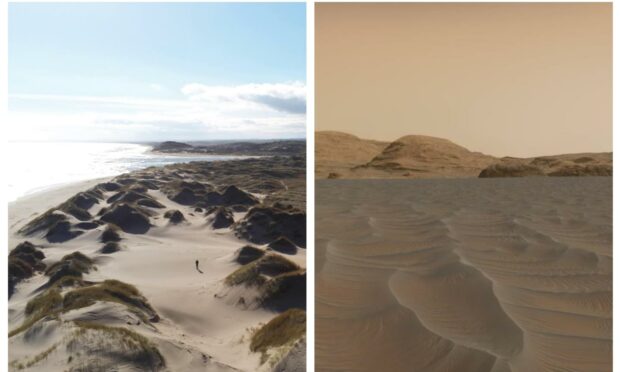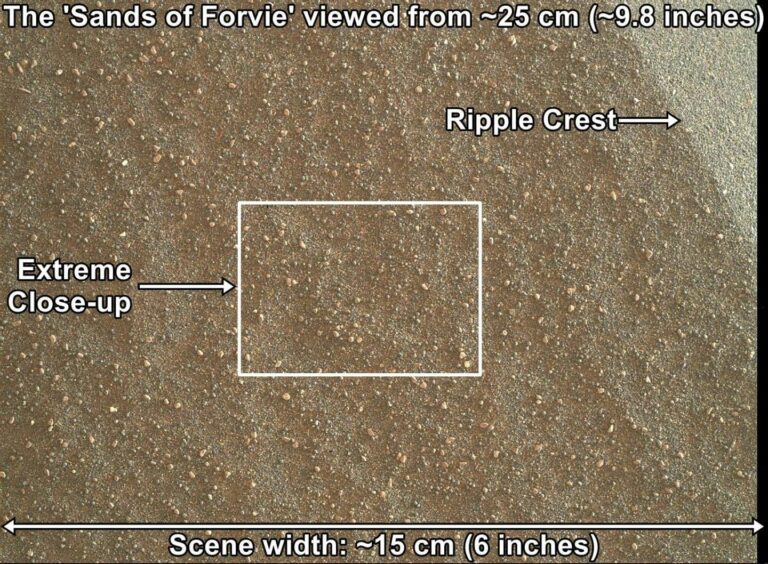Images captured by a Nasa rover show an area on Mars called the “Sands of Forvie” whose name might have been inspired by its Aberdeenshire counterpart.
Photos shared from the Curiosity rover’s journey on Mars has received a lot of interest online after images from Dr Abigail Fraeman were posted on Facebook.
Shared on Aberdeenshire Council Ranger Service’s Facebook page, the images were posted after they received a response to a letter. Written six weeks ago, they asked Dr Abigail Fraeman, Research Scientist at the Mars Science Laboratory at NASA, why there was a place called the ‘Sands of Forvie’ on Mars.
Why the Sands of Forvie?
In her response, Ms Fraeman said that these names were not officially approved but rather the informal names help to keep track of different areas.
She said the names given, “Are very necessary for us because referring to ‘this rock’ and ‘this rock’ gets very confusing after looking at thousands of rocks.”
“Each Nasa Mars mission decides on their own unique convention for choosing feature names. For Curiosity, we divided our landing area into quadrants, and each quadrant is named after a region that contains famous geologic features on Earth.”
An aerial view shows the size of the area called the “Sands of Forvie” on Mars which appears to be inspired by Forvie National Nature Reserve in Ellon.
The images shown are captured in a quadrant called “Torridon” on Mars where the Curiosity rover is currently travelling through. Features in this quadrant are given Scottish names, ones that are related to Scottish towns, lochs and regions in Scotland.
Ms Fraeman said a couple of science team members who have done fieldwork in Scotland led the effort on picking names in this theme.
Black sand and Martian dust
The area is one of the most visible geographical features in the Torridon quadrant. Described as a giant sheet of sand, the Sands of Forvie measure nearly one mile in width.
People viewing the post on Facebook were quick to mention Forvie National Nature Reserve in Collieston.
Identified as “one of the most striking features” in the quadrant, it is thought that the name ‘Sands of Forvie’ was inspired by the nature reserve in Ellon.
The sands pictured on Mars are black in colour. Ms Fraeman explains that this is because the sand is made up of ground-up pieces of volcanic basalts. Similar to sands found in Iceland.
In some places in the area, the sand is coated in a thin layer of Martian dust.
Ms Fraeman said it was: “One of the most striking features in the Torridon quadrant.”
She added: “Studying features like this helps us understand modern sediment transport on Mars and better interpret Mars’ preserved sedimentary rock record.”

